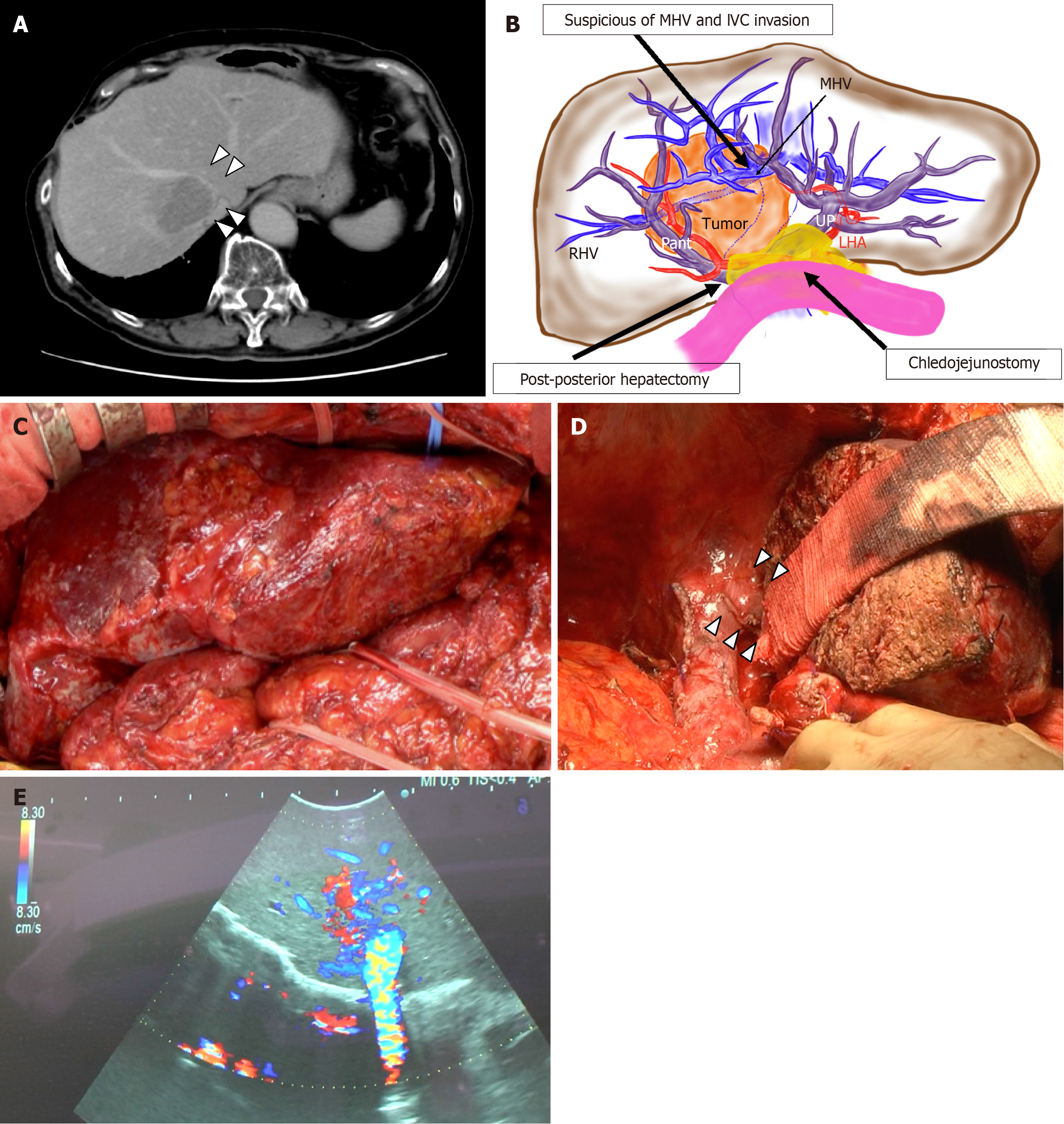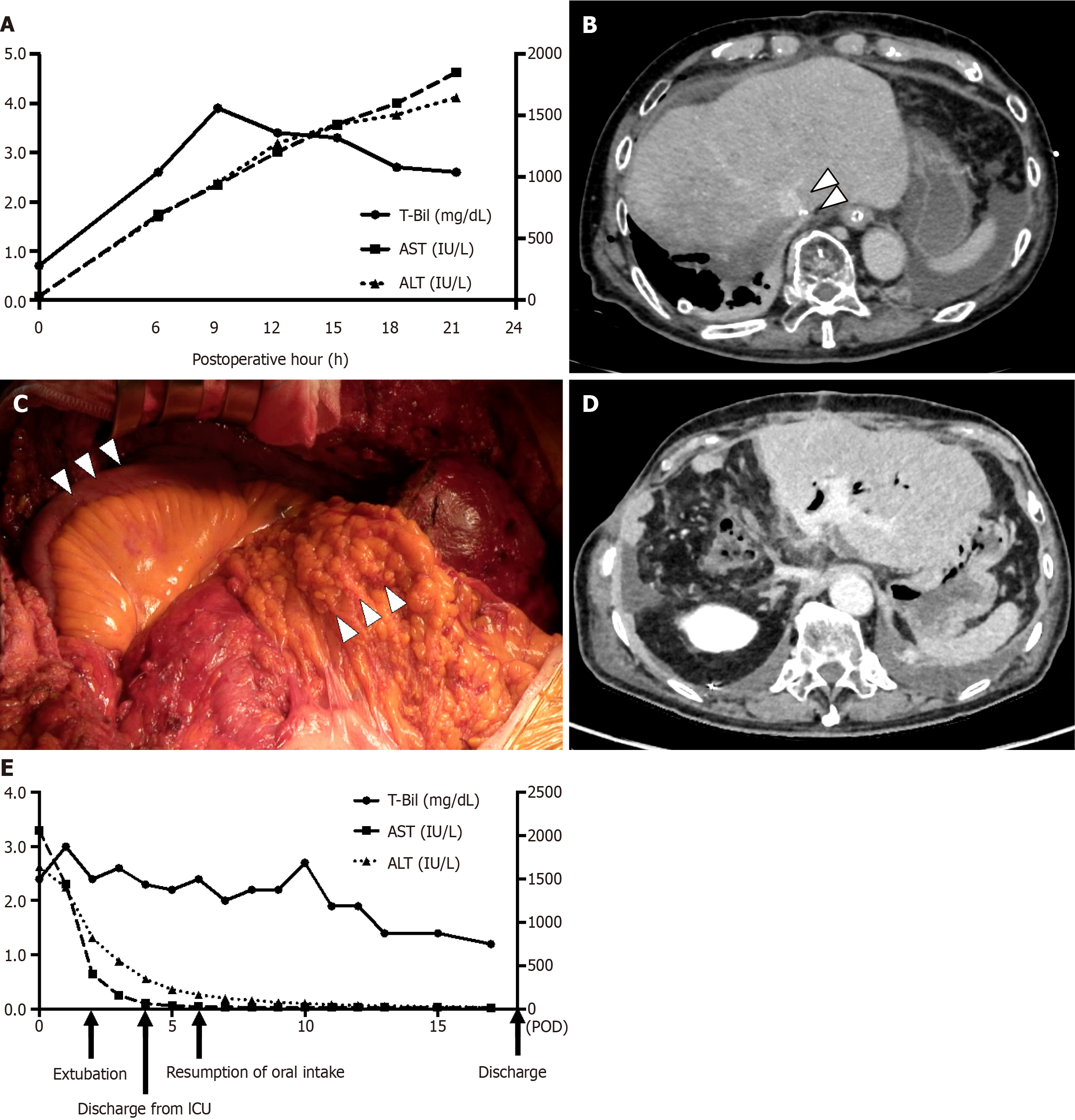Copyright
©The Author(s) 2024.
World J Clin Cases. Oct 16, 2024; 12(29): 6320-6326
Published online Oct 16, 2024. doi: 10.12998/wjcc.v12.i29.6320
Published online Oct 16, 2024. doi: 10.12998/wjcc.v12.i29.6320
Figure 1 Preoperative and the first operation information of this case.
A: Contrast enhanced computed tomography of tumor. Arrowhead indicates suspicious of tumor invasion for middle hepatic vein and inferior vena cava; B: Schema of this case; C: Intraoperative photography after adhesiolysis around the liver; D: Intraoperative photography after specimen is removed. Arrowhead indicates extrahepatic naked left hepatic vein; E: Doppler ultrasonography shows normal hepatic vein flow direction. MHV: Middle hepatic vein; IVC: Inferior vena cava; RHV: Right hepatic vein; UP: Umbilical portion, LHA: Left hepatic artery; Pant: Anterior branch of portal vein.
Figure 2 Postoperative course and information, and second operation of this case.
A: Postoperative blood test of this case; B: Contrast enhanced computed tomography (CT) scan of 18 hours after the first operation. Contrast enhancement of segment 4 is heterogeneously, and the root of left hepatic artery is kinking (arrowhead); C: Intraoperative photography of the secondary operation. Arrowhead indicates mobilized ileocecal region and omental flap; D: Contrast enhanced CT scan of 11 days after the second operation. Remnant liver was repositioned and parenchymal contrast enhancement was improved; E: Postoperative course after secondary operation. AST: Aspartate aminotransferase; ALT: Alanine aminotransferase; ICU: Intensive care.
Figure 3 Contrast enhanced computed tomography scan comparison of umbilical portion-inferior vena cava distance and umbilical portion-inferior vena cava angle.
A: Pre-operation; B: Post-operation of 1POD; C: 11POD. POD: Post operative day; IVC: Inferior vena cava; UP: Umbilical portion.
- Citation: Higashi H, Abe Y, Abe K, Nakano Y, Tanaka M, Hori S, Hasegawa Y, Yagi H, Kitago M, Kitagawa Y. Novel procedure for hepatic venous outflow block after liver resection: A case report. World J Clin Cases 2024; 12(29): 6320-6326
- URL: https://www.wjgnet.com/2307-8960/full/v12/i29/6320.htm
- DOI: https://dx.doi.org/10.12998/wjcc.v12.i29.6320











